This image illustrates the catalogue of the Italians who fought in the Latin war. In the lower right, Mezentius is shown mounted on his horse, and to his left, his son Lausus (647-54). Their standard is a scorpion. In the lower left is Aventinus, who is said to be beautiful, but his entire upper body is covered in the lion-skin of Hercules, which obscures his face. His men carry javelins, and his standard and shield bear the symbol of the hydra (655-69). On the right, above Mezentius, is a group of soldiers led by twin brothers Catillus and Coras. On their standard is a centaur, because Vergil compares their fighting style to the stampede of centaurs (670-7).
In the upper right corner, the general whose name banner is smudged must be Caeculus, king of Praeneste, whose standard is probably meant to be a wolf, in reference to the wolf-skin caps worn by his men (678-90). To his left is Messapus, whose standard-bearer, next to him, carries a standard with an emblem of swans, the animal to which Vergil compares Messapus' troops (691-705). Next to the left comes Clausus, linked to the Claudian dynasty (706-22), whose standard is a more official looking symbol, perhaps a griffin or an eagle. Directly behind him, Umbro bears a banner of snakes, symbolizing his race's ability to enchant snakes (750-60). To his immediate left is Virbius, son of Hippolytus, the only general in this image without a standard (761-82).
In the upper left corner is Halaesus [Alesus], in a sturdy war car; the tree in his standard represents the fertility of the land he governs (723-32). Between Virbius and Halaesus, Camilla rides ready for battle, with long flowing hair marking her as female; her standard has two arrows, signifying a bow and arrow as her weapon of choice (803-17). To the left, below Halaesus, stands Ufens; his standard is a boar, potentially a reference to his race's skill at hunting in the woods (744-9). To the right of Ufens is a general labelled Cetalus, which must be a mislabelling of Oebalus, general of the Sarrastians. His standard is a person holding what may be the artist's rendering of the cateia, an unknown weapon that Vergil mentions as a primary weapon of the Sarrastians. (733-43) In the center of the image, Turnus sits on the back of a well decorated horse. His helmet is elaborate, with the bust of a chimaera in place of a plume on top (783-802). His standard is also a chimaera, and he is flanked by a cavalry soldier and two foot soldiers. (Katy Purington)
Woodcut illustration from the “Strasbourg Vergil,” edited by Sebastian Brant: Publii Virgilii Maronis Opera cum quinque vulgatis commentariis expolitissimisque figuris atque imaginibus nuper per Sebastianum Brant superadditis (Strasbourg: Johannis Grieninger, 1502), fol. 305r, executed by an anonymous engraver under the direction of Brant.

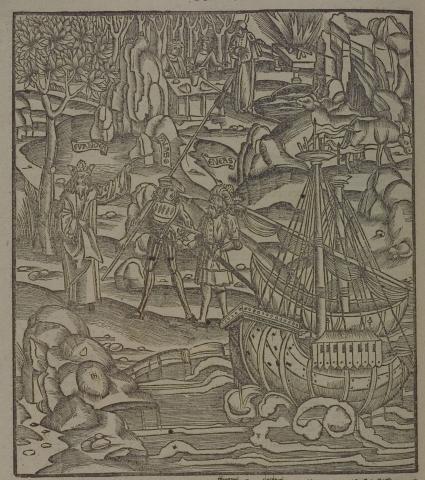
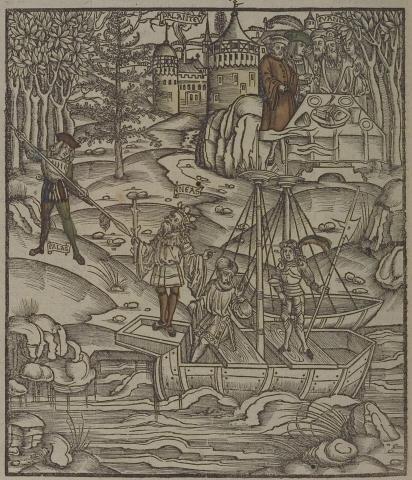
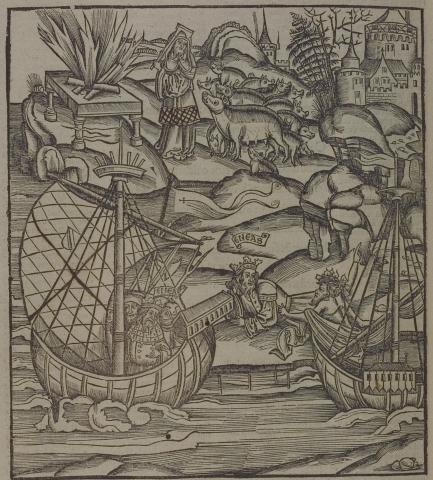
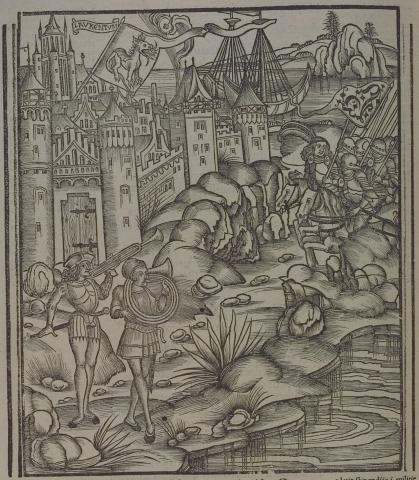
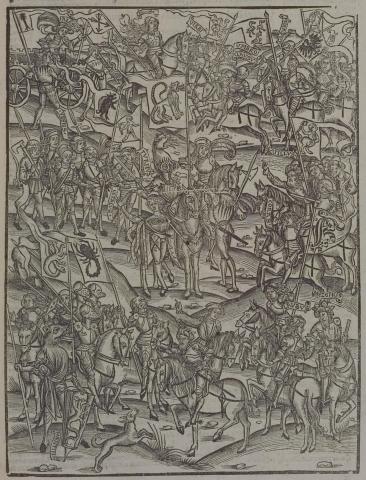
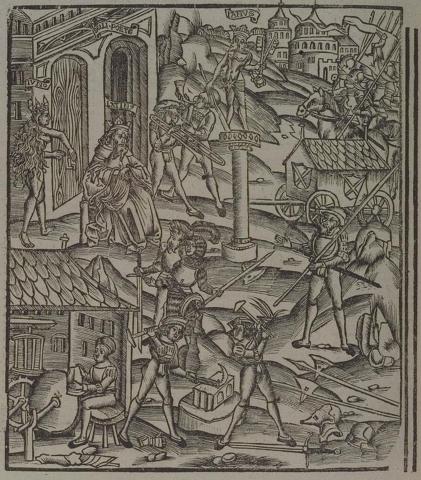
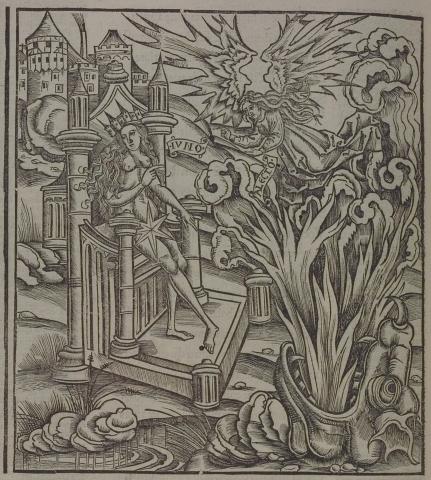
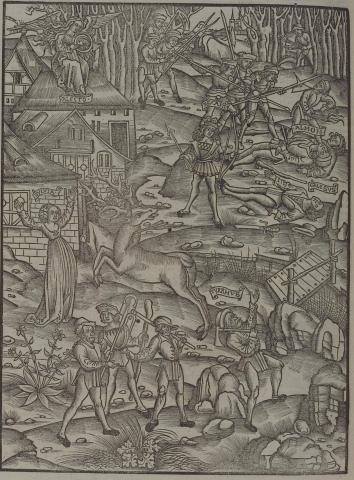
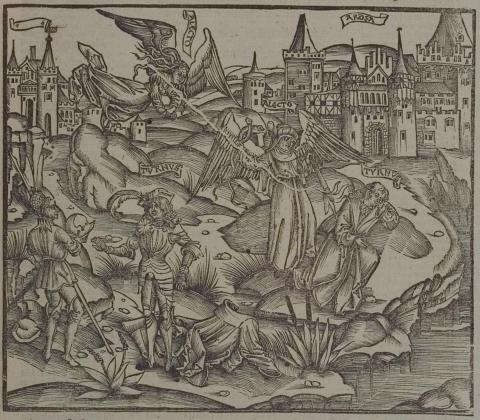
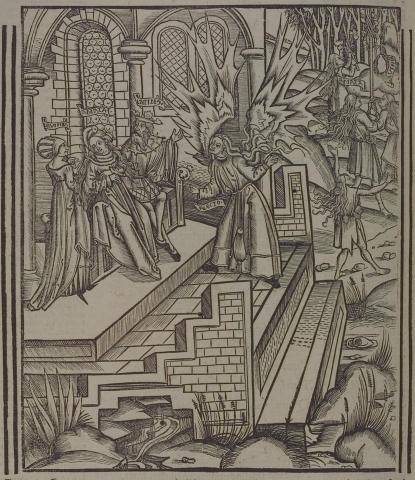
Sebastian Brant (1458-1521) was a humanist scholar of many competencies. Trained in classics and law at the University of Basel, Brant later lectured in jurisprudence there and practiced law in his native city of Strasbourg. While his satirical poem Das Narrenschiff won him considerable standing as a writer, his role in the transmission of Virgil to the Renaissance was at least as important. In 1502 he and Strasbourg printer Johannes Grüninger produced a major edition of Virgil’s works, along with Donatus’ Life and the commentaries of Servius, Landino, and Calderini, with more than two hundred woodcut illustrations. (Annabel Patterson)